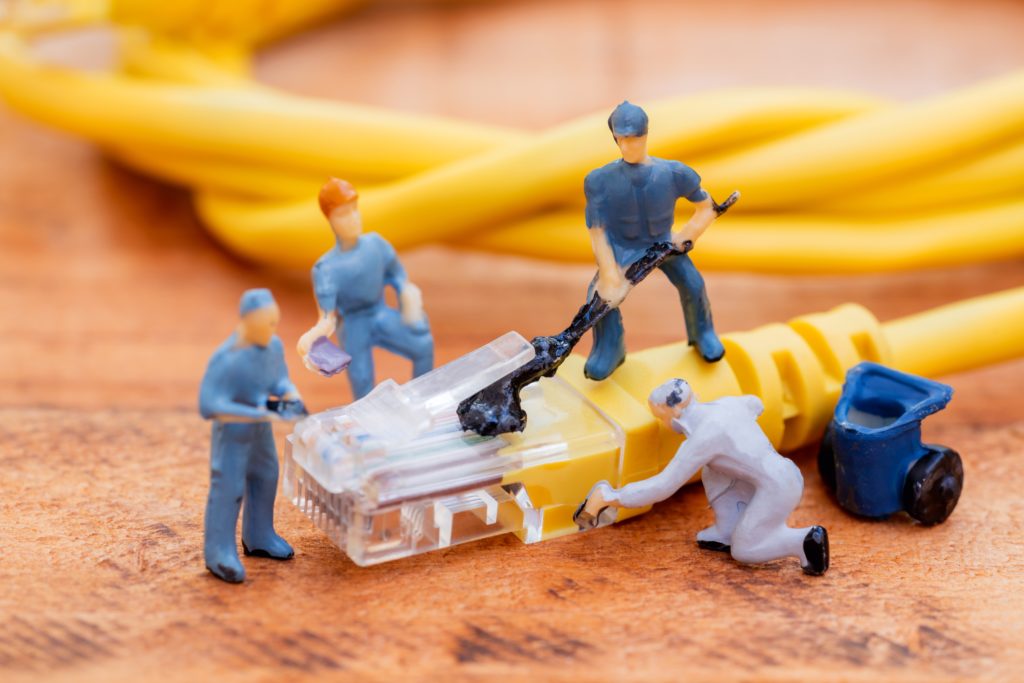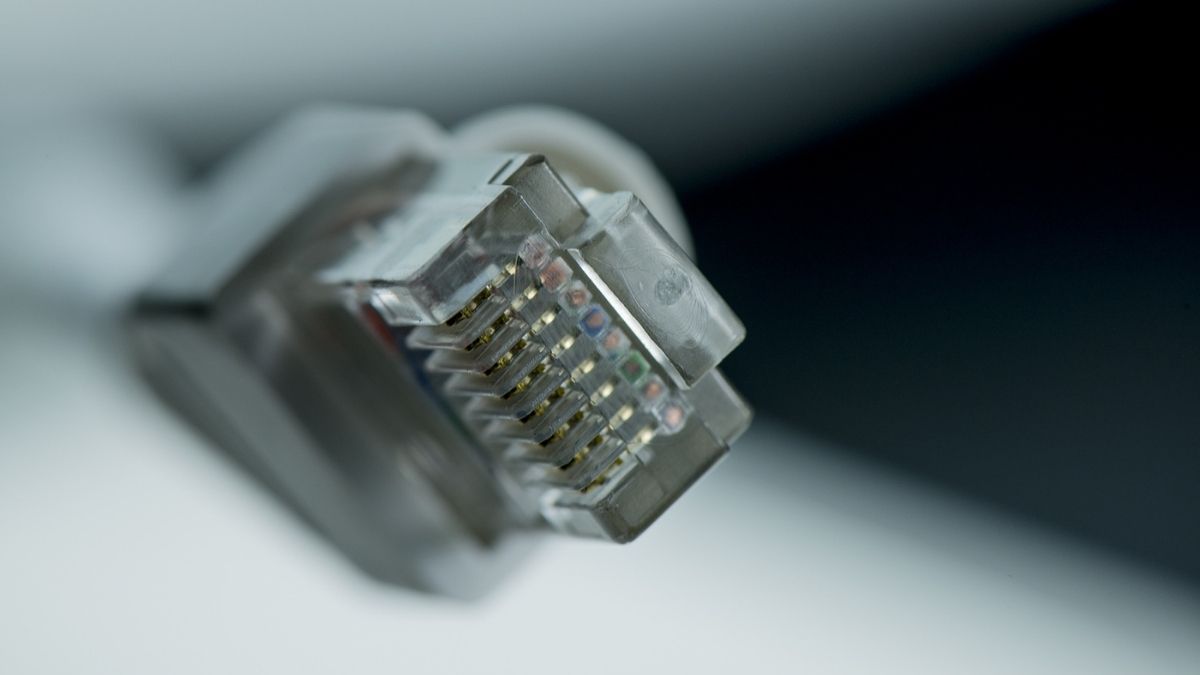If you’ve been researching potential broadband service options for your business, you’ve probably come across the terms FTTP, FTTC and Leased Lines. You might be wondering how these are different and which one is the best option. The answer will depend on your expected usage and your budget.
At Carden Telecoms we’ve supplied businesses with all three. Let’s look at how they differ. We’ll discuss the difference Between FTTP & FTTC lines, as well as leased line connections and some of the benefits of each option.
FTTC Connections

What Is An FTTC Connection?
FTTC stands for Fibre To The Cabinet. This is because FTTC connections use fibreoptic cables to make the connection between the internet provider’s data centre and the local telephone exchange cabinet. The “last mile” of the connection, from the cabinet to your premises is still made via standard copper wiring.
How Fast Is An FTTC Connection?
The majority of FTTC connections have speeds between 30mbps and 80mbps.
These speeds would be more than enough for most households and small businesses with only a few employees. However, larger organisations with a high number of concurrent users may find that FTTC connections are insufficient for their needs.
What Are The Benefits Of An FTTC Connection?
Of the three connection types covered in this article, FTTC connections are the most affordable and are available in most locations. For small businesses, FTTC connections are an affordable high-speed solution.
FTTP Connections

What Is An FTTP Connection?
FTTP stands for Fibre To The Premises. Unlike FTTC broadband connections, where the last mile of the circuit is still made via copper cable, the entire FTTP internet connection uses fibre optic cable. The fibreoptic line runs from your internet service provider to the nearest exchange cabinet, and then another fibre line runs from the cabinet to your premises. Because the entire connection is made using fibre, FTTP is sometimes called full-fibre broadband.
How Fast Is An FTTP Connection?
Most FTTP connections have speeds between 50mbps and 1000mbps.
FTTP speeds are more than adequate for most small to medium-sized businesses. However, if you have more than 20 employees or make heavy use of cloud services, you might want to consider upgrading to a leased line instead.
What Are The Benefits Of An FTTP Connection?
FTTP connections are faster than FTTC connections. They are also more reliable. This is because fibre optic cable is more resilient than copper cable and is less susceptible to interference or environmental damage.
Not every region of the country has FTTP connections available. If the building your business occupies does not already have an existing FTTP connection running to it, there will be an additional cost to install a new cable.
Leased Line Connections

What Is A Fibre Leased Line Connection?
Unlike FTTP and FTTC connections, leased line connections run directly from your premises to the internet provider’s exchange. Leased lines’ fibreoptic cables do not connect via a local cabinet. This is possible because a dedicated leased line for business is ‘uncontested’, which means they are exclusively for the use of a single customer and not shared by other premises.
How Fast Are Leased Lines?
Leased lines have speeds in the 1Mbps to 10Mbps range, with the average being around 2Mbps.
This is much faster than any FTTP or FTTC connection. Most small businesses would never need the higher speeds a leased line offers but larger organisations with large workforces may require one. Organisations which concurrently use high-bandwidth services like video calling or real-time data backups would also benefit from these speeds.
What Are The Benefits Of A Leased Line Connection?
Leased lines are the fastest connections available on the market. Considering that the amount of bandwidth required by businesses is increasing every year, by installing a leased line with higher upload and download speeds than you currently require, you are effectively future-proofing your business.
Because leased lines are exclusively for the use of one customer, they are not impacted by surges in traffic like FTTC and FTTP lines are. There will be no slowdown during peak times. However, leased lines are significantly more expensive than FTTP and FTTC lines and often come with longer minimum contracts.
How Do You Know Which Connection Is Right For Your Business?

Understand Your Business Needs
Understanding the present and future IT needs of your company can help you select an appropriate business internet connection.
Consider how your employees and clients connect with your business online. Do they often stream video material, download huge files, participate in video conferencing, or use a VoIP telecoms system, or do they just need to check email? All these technologies require different amounts of bandwidth, so it’s important to understand your current usage before knowing which connection to upgrade to.
You might believe you can get away with having a domestic broadband connection if your business is modest. Although they are frequently less expensive than services targeted for corporations, be cautious of possible dangers. Some subscriptions forbid business usage, while others are unable to provide upload speeds fast enough for commercial use, which might be troublesome if you operate a website or other online service or utilise cloud backup.
Even though they are more expensive, dedicated business internet connections typically provide better value since they frequently come with more features and give more priority to uptime, service, and support.
Compare Service Level Agreements
The majority of broadband providers include a Service Level Agreement (SLA) as part of their contract. This document outlines the guidelines for using their service, including performance requirements, up-time guarantees, technical support specifications, response times, and compensation plans if they fall short of the agreed-upon service level.
You should compare the Service Level Agreements provided by the vendors on your shortlist to determine which one is best for your requirements and to estimate the costs of each choice in detail. A single supplier might have different SLAs for the different lines/packages that they offer.
Let Carden Telecoms Help
Hopefully, this has been a useful overview of the differences between FTTC, FTTP, and leased line connections. At Carden Telecoms, we have options available for all three types and our team of telecoms engineers can help you determine which one would be the most suitable for your business. Speak to our team today to learn more. We can help you examine your current internet usage, estimate your future needs, and find the right business broadband line for you.


